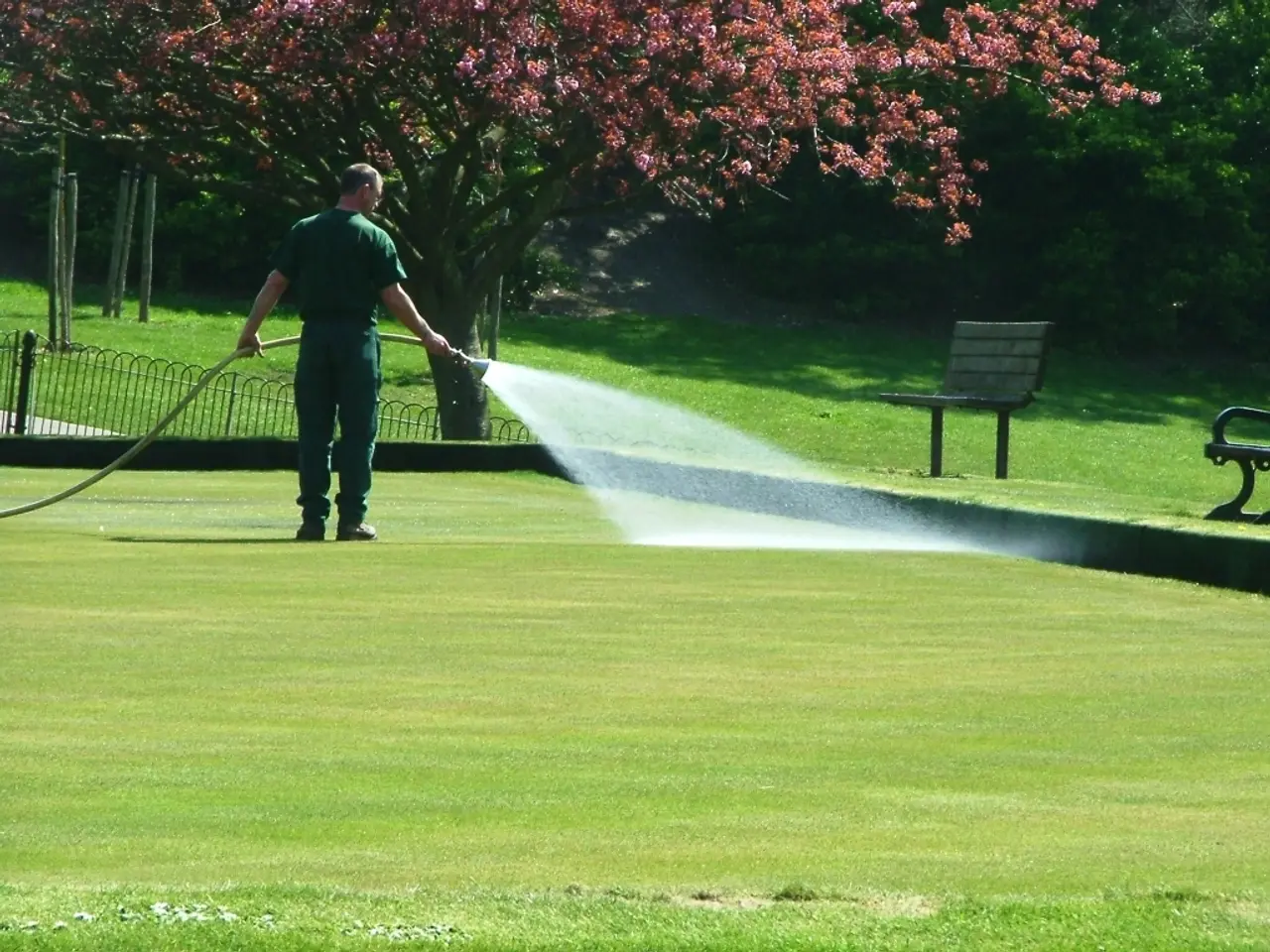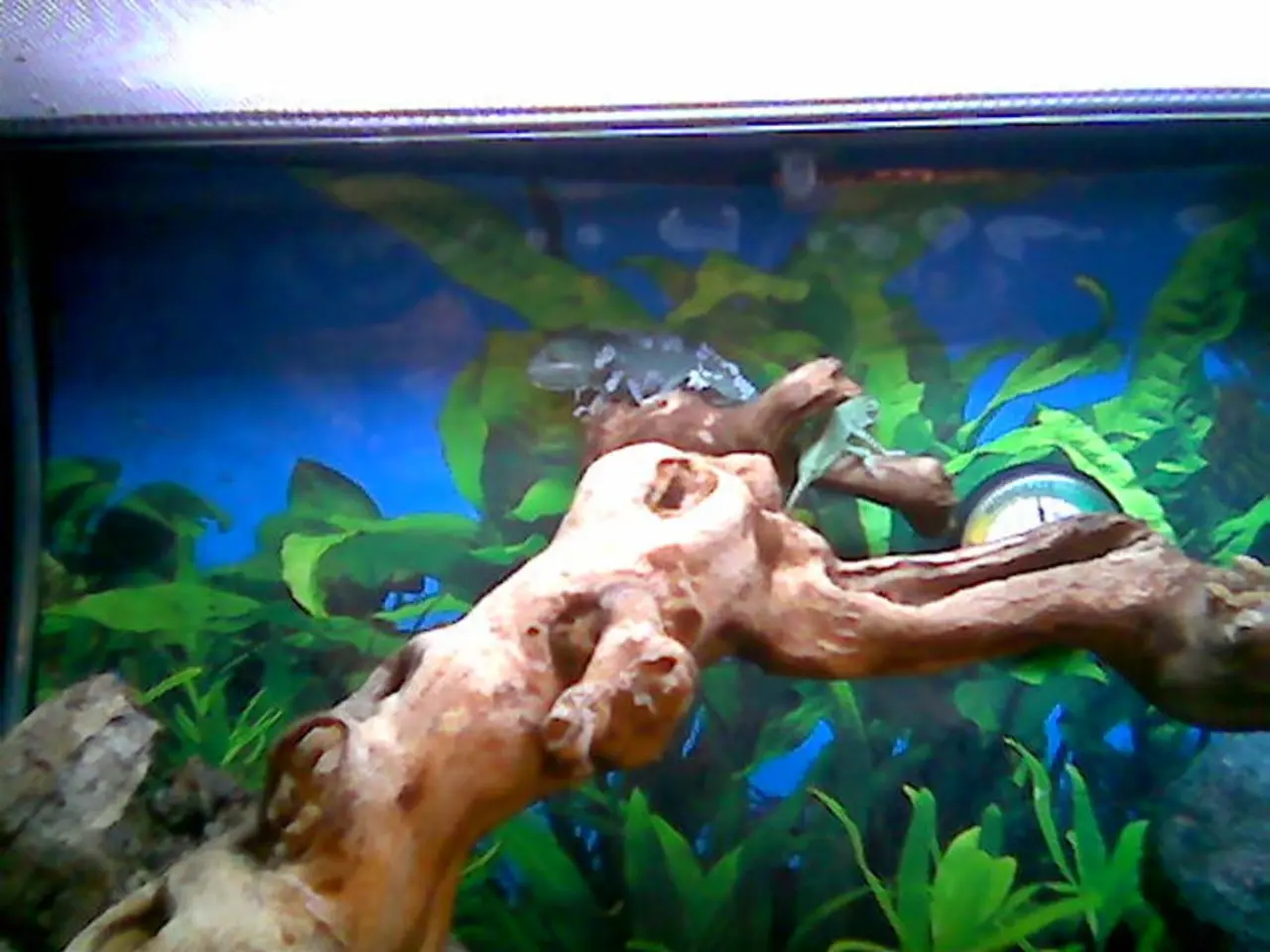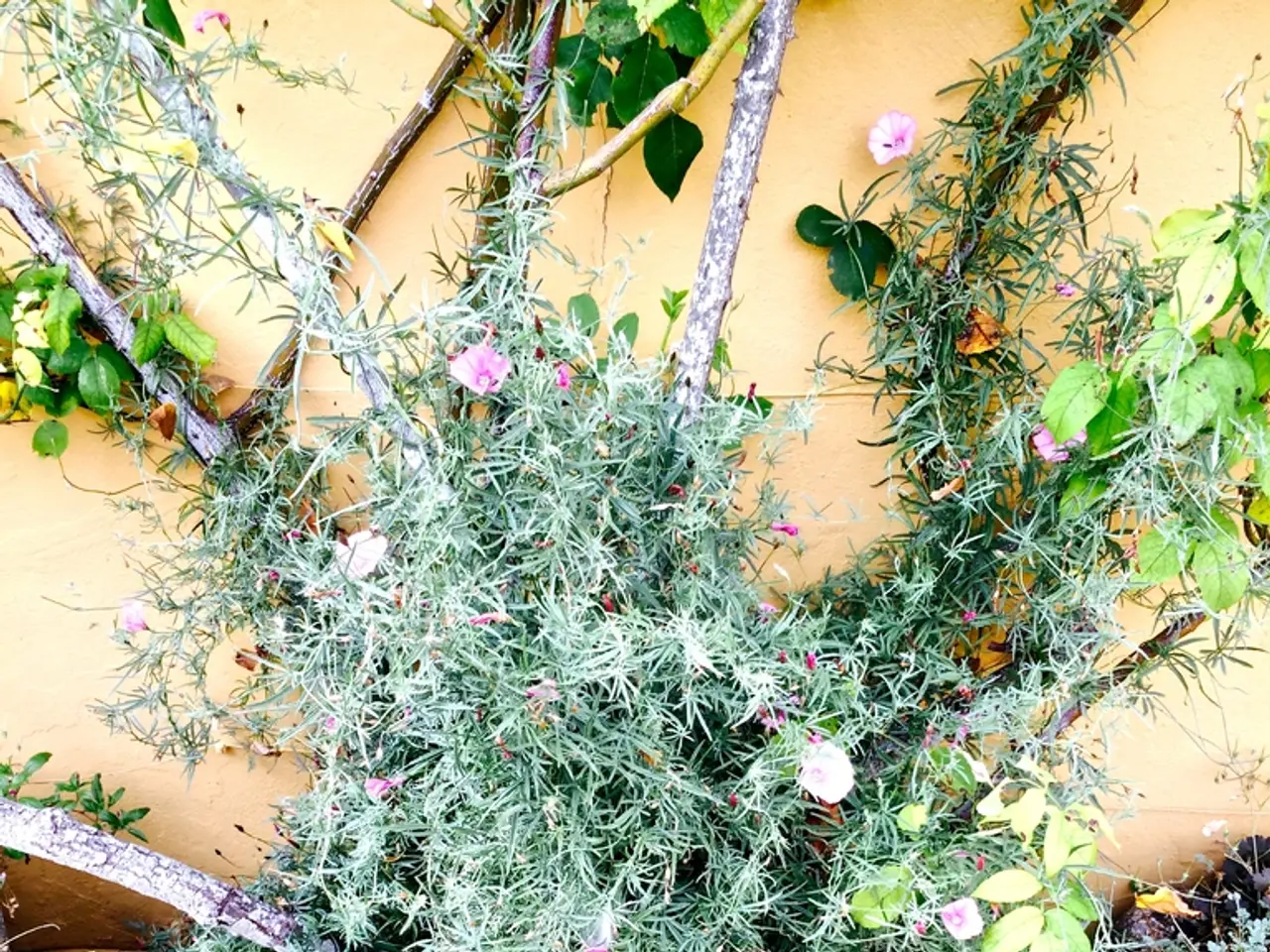Employ Drip Irrigation in Elevated Gardens for Enhanced Yield with Minimal Water Usage
Drip irrigation is a popular choice for watering raised beds due to its efficiency and benefits for plant health. This system delivers water directly to a plant's root area, keeping the foliage dry and reducing water loss to evaporation.
Choosing the System
To select the right drip irrigation system for your raised beds, start by measuring your beds and mapping your garden layout, noting plant zones and water needs. Based on bed size and plant type, choose either ¼" soaker dripline for compact beds, containers, or flexible coverage, or emitter tubing with 6-18 inch emitter spacing for targeted watering of shrubs or heavy feeders.
When selecting drip lines, ensure they are UV-resistant and check manufacturer flow rates (typically 0.4–0.8 GPH) to ensure efficient watering. Essential components include a backflow preventer, filter, pressure regulator, connectors, tubing, emitters or drip tape, and optionally timers or fertilizer injectors.
Installing the System
Begin by attaching a Hose Y connector to the nearest outdoor spigot, using plumber's tape for a tight fit. Connect a timer to one Y leg for automated watering. Attach the pressure regulator below the timer, then connect your main tubing line to the regulator using a female hose start fitting.
Bring the tubing to the raised beds, cutting it to bed height. Use elbows and connectors to run the tubing horizontally on top of beds before connecting to drip lines or emitter tubing inside the bed. Secure tubing with staples, flush lines before use to prevent clogging, and cover the tubing with mulch or soil for protection and concealment.
Test the system on manual mode to check for leaks and consistent water flow.
Winterizing the System
In cold winters, it's essential to winterize the irrigation system to prevent water from freezing and splitting the tubes. Drain all water from the system, remove timers and pressure regulators if they are sensitive to cold, and flush the lines again before winter storage.
Store components like tubing, timers, and filters indoors or in a frost-free location to extend their lifespan.
This approach ensures efficient water use, healthier plants, and protects your system through seasonal changes. For a practical installation walkthrough, videos like the one from July 2025 demonstrate setup and results in raised beds.
Drip irrigation systems consist of five main components: a water filter, a pressure reducer, a pressure gauge, a header pipe, and drip lines. Weeds growing between plants are deprived of water and die with drip irrigation, and the system encourages the roots to grow down due to deep watering.
There are two primary types of drip irrigation systems: rigid drip systems and flexible T-tape systems. Rigid drip systems are more expensive but last longer, while flexible drip tape, also known as T-tape, is cheaper but only lasts for a season or two.
In the course of improving your home-and-garden lifestyle, consider implementing a drip irrigation system in your garden, particularly for raised beds. This lifestyle change can boost the health of your plants, as the efficient system delivers water straight to a plant's root area, keeping the foliage dry and reducing water loss to evaporation.
To create a home-and-garden environment that thrives with a drip irrigation system, opt for UV-resistant lines and essential components like a backflow preventer, filter, pressure regulator, connectors, tubing, emitters or drip tape, and optionally timers or fertilizer injectors. By doing so, you'll be nurturing the roots of your plants and fostering a beautiful home-and-garden lifestyle.




